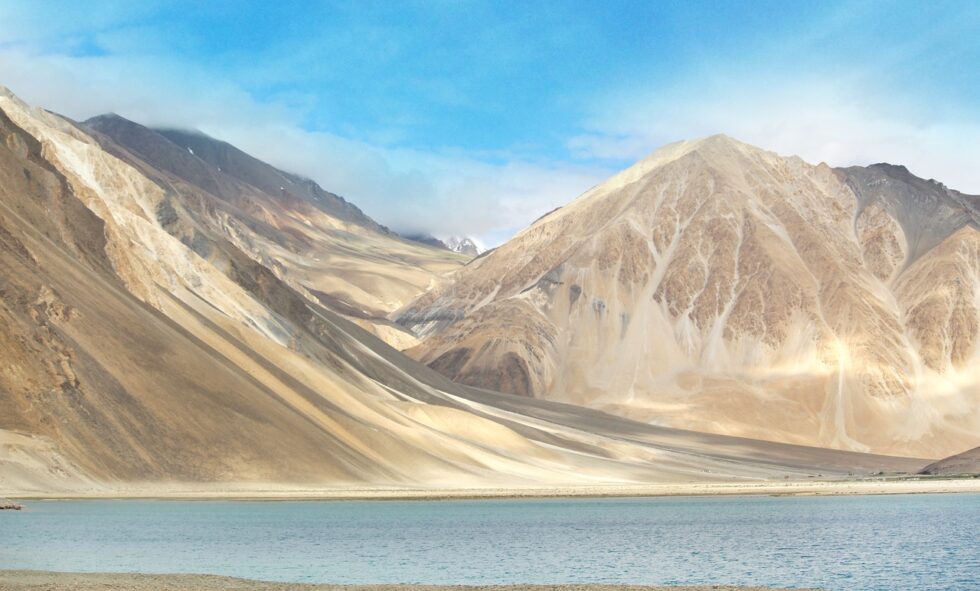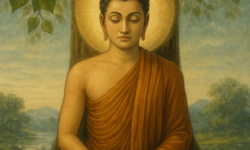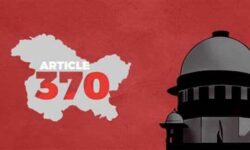
Ladakh, often referred to as the “Land of High Passes,” is a unique and historically rich region of northern India. Nestled in the trans-Himalayan belt, Ladakh has long maintained an identity distinct from the erstwhile state of Jammu and Kashmir (J&K). With deep-rooted Tibetan Buddhist influences, the region historically functioned as an independent Buddhist kingdom before its annexation by the Dogra rulers of Jammu in 1834. This annexation marked the beginning of Ladakh’s prolonged marginalization within the larger princely state of J&K, a pattern that continued post-independence under Indian rule. While the world remains largely unaware of Ladakh’s unique historical and cultural identity, its political and economic subordination has been a point of contention for decades.
The Marginalization of Ladakh in J&K Politics
For centuries, Ladakh’s governance has been dictated by external powers with little regard for its distinct cultural and developmental needs. Under the Dogras, the British, and later, independent India, the region remained on the periphery of administrative priorities. Ladakh’s small population and tough terrain gave it little representation, while power stayed with the larger Kashmir Valley and Jammu region. The central government allocated very little funding to Ladakh compared to other regions, which led to serious shortcomings in essential services. As a result, the region struggled with poor infrastructure, limited educational facilities, and inadequate healthcare. Roads, schools, and hospitals were either underdeveloped or insufficient to meet the needs of the people, making daily life more difficult for Ladakhis. Leh, the Buddhist-majority district of Ladakh, often found itself at odds with the Muslim-dominated state government in Srinagar. Many Ladakhis viewed the J&K administration as indifferent to their concerns, forwarding a growing demand for direct governance from Delhi. This demand gained momentum in the 1950s and was championed by prominent Ladakhi leaders such as Kushok Bakula Rinpoche and Nawang Rigzin Jora. Their vision for Ladakh’s autonomy revolved around three core concerns: political self-governance, equitable development, and cultural preservation.
The Demand for Union Territory Status
For decades, Ladakhis pushed for Union Territory (UT) status, believing that direct administration from New Delhi would better address their needs. They felt that governance from Srinagar did not reflect their priorities, leading to political neglect. They saw UT’s status to attract greater central investment to improve infrastructure, tourism, and economic development, which had long been overlooked. Another major concern was the preservation of their Tibetan-Buddhist heritage, as many feared that Ladakh’s unique cultural and religious identity was being overshadowed under J&K’s political framework. On August 5, 2019, the Indian government, led by the National Democratic Alliance (NDA), revoked Article 370 and 35A, confiscated J&K of its special status, and bifurcating the state into two Union Territories: Jammu & Kashmir (with a legislature) and Ladakh (without a legislature). While the move was met with celebration in Leh, it was strongly opposed in Kargil and other Muslim-majority areas of Ladakh.
The Double-Edged Sword of UT Status
The transition to a UT brought both opportunities and challenges. While Ladakhis gained direct administrative control under the central government, they also lost any form of local democratic governance, as the region was placed under the rule of a Lieutenant Governor appointed by New Delhi. The absence of an elected legislative assembly left many feeling politically voiceless, trading one form of marginalization (under J&K) for another (under the direct central rule). Ladakh has two Autonomous Hill Development Councils (LAHDCs) in Leh and Kargil, established in 1995 and 2003, respectively. However, these councils have limited administrative and financial powers, leaving major decisions in the hands of the central government. Many Ladakhi leaders argue that these councils should be granted greater legislative and financial autonomy to address local issues effectively.
Cultural and Ecological Concerns in the Post-2019 Era
Beyond political representation, Ladakh faces existential concerns regarding its cultural identity and environmental sustainability. The removal of J&K’s special status has opened the region to unrestricted industrial projects, raising fears of ecological degradation. Ladakh’s fragile ecosystem is at risk from large-scale infrastructure and tourism projects, which could alter its traditional way of life.
The shift toward commercial development has also sparked concerns over cultural erosion. Ladakhi languages, including Bhoti, Purgi, Balti, Sheena, and Brokpa, are under threat as Hindi and English gain prominence. Moreover, there are apprehensions that religious traditions could be diluted with increasing central control.
Religious and Ethnic Divisions: A Growing Rift
Ladakh is home to both Buddhist (Leh) and Muslim (Kargil) communities, whose political priorities often diverge. While Buddhists largely supported UT status and additional constitutional safeguards, many Muslims in Kargil opposed the 2019 reorganization, preferring governance structures that maintained closer ties with J&K. These differences complicate the region’s already complex identity politics.
Current Movements and the Path Forward
Ladakhi groups, including the Ladakh Apex Body (LAB) in Leh and the Kargil Democratic Alliance (KDA) in Kargil, are actively demanding greater autonomy and protection for their region. Their key demands include Sixth Schedule protection to safeguard land ownership, tribal rights, and cultural heritage from external exploitation. They are also advocating for an elected legislature to ensure democratic representation and political agency. Additionally, they seek greater financial and legislative autonomy to empower the Ladakh Autonomous Hill Development Councils (LAHDCs) in decision-making. Another major concern is the need for ecological safeguards to prevent unchecked industrial expansion, which could threaten Ladakh’s fragile environment.
Conclusion:
Ladakh’s transformation from a politically neglected region of J&K to a Union Territory has brought newfound recognition but also fresh challenges. While UT status has granted Ladakh direct access to central governance, it has also created a vacuum in local political representation. The people of Ladakh now find themselves negotiating with the central government over issues of autonomy, cultural preservation, and sustainable development. As Ladakh carves out its post-2019 identity, the demand for self-governance and constitutional safeguards remains central to its future. It is the responsibility of the central government to preserve Ladakh’s unique identity, as it is one of the finest tourist destinations, rich in culture, heritage, and natural beauty.
Author: Mr. Zakir Hussain, Senior Research Fellow (SRF), Department of Public Administration, Panjab University, Chandigarh








